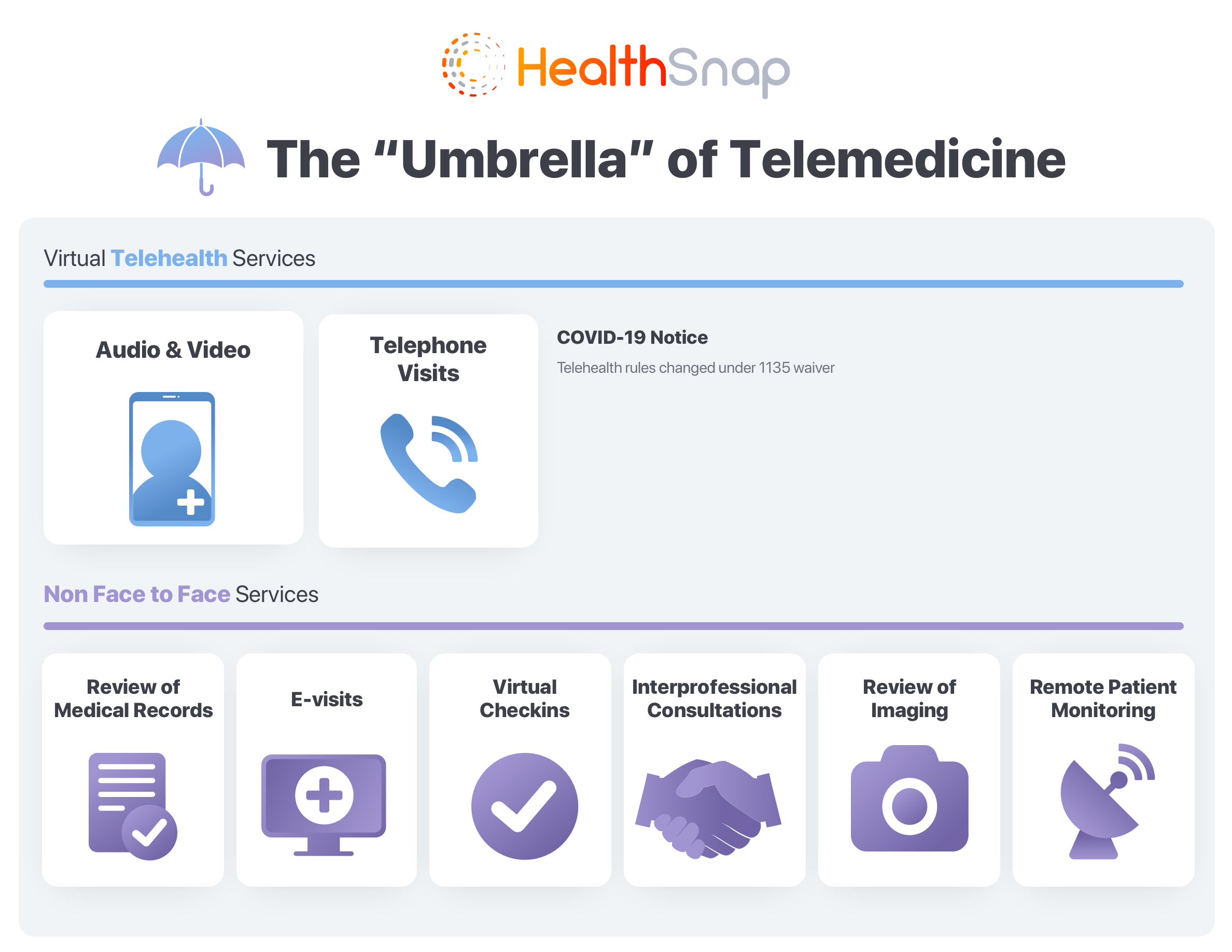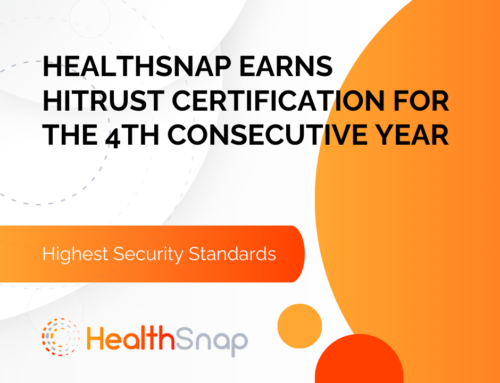WHY TELEMEDICINE, WHY NOW?
Given the current global health crisis, now more than ever, providers are looking for ways to meet patients where they are by expanding remote monitoring programs.
THE UMBRELLA OF TELEMEDICINE
We have encountered some understandable confusion around the various virtual care services, so we’ve devised a digestible explanation for the various forms of care that fall under what we at HealthSnap call “The Umbrella of Telemedicine,” with all virtual healthcare services falling under this umbrella. We view Telemedicine as having two distinct and separate categories:
- Virtual Face-to-Face Services, known as Telehealth (as defined by Medicare), which now includes telephone visits in addition to audio and video visits, and
- Non Face-to-Face Services, including E-visits, interprofessional consultations, and Remote Patient Monitoring (RPM)
HOW REMOTE PATIENT MONITORING AND TELEHEALTH WORK TOGETHER
RPM is a digital health solution that captures and records patient physiological data outside of a traditional health setting. It provides visibility into patients’ lives outside of their scheduled appointments, allowing providers access to review and manage the disease state remotely. An RPM Program is an additional service area for a practice that targets specific, medically necessary patients, based on the provider’s diagnosis, deemed to require digital monitoring and management. In essence, RPM can be seen as a visit that occurs over one month’s time in aggregate, and in terms of revenue cycle management, it is billable over the calendar month. Learn more in our RPM FAQ.
We look at Telehealth as the skeleton when it comes to virtual care services. It sets the foundation for the house of virtual care. However, when offering a Telehealth program alone, patients may schedule potentially unnecessary visits, which may result in inefficient use of the staff’s time in a given provider’s office. By coupling a Telehealth program with RPM, remote care becomes data-driven, enabling higher risk patients to be prioritized by need. Additionally, anecdotally speaking, 80% of the time for a Telehealth visit has been found to be spent collecting vitals that can be more efficiently collected by utilizing RPM.
In essence, when paired together, RPM provides the intelligence for a data-driven approach to Telehealth to ensure the right patient receives the right care at the right time, while also enhancing practice growth with additional reimbursement streams.
HOW TO EXPAND YOUR TELEHEALTH PROGRAM WITH RPM WEBINAR ON-DEMAND
To learn more about the distinctions among the various virtual care services, including a deep dive into RPM CPT codes, please check out our popular on-demand webinar, How to Expand Your Telehealth Program with RPM, led by HealthSnap’s Co-Founder, Samson Magid.
In this webinar, he discusses:
- Key differences between RPM and Telehealth
- RPM CPT codes and how they are complementary to Telehealth CPT codes
- How to expand existing Telehealth services by utilizing RPM
View How to Expand Your Telehealth Program with RPM Webinar On-Demand










